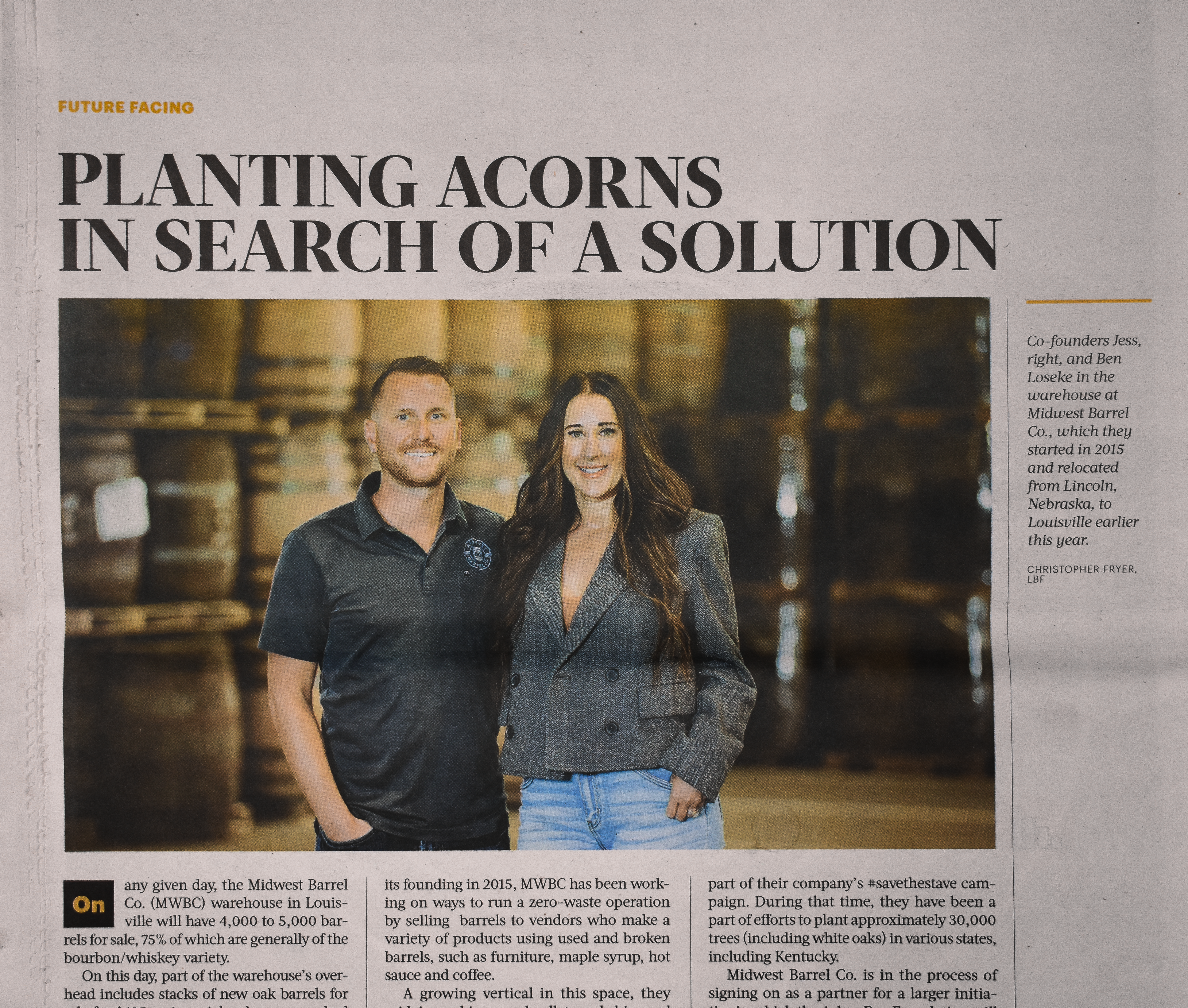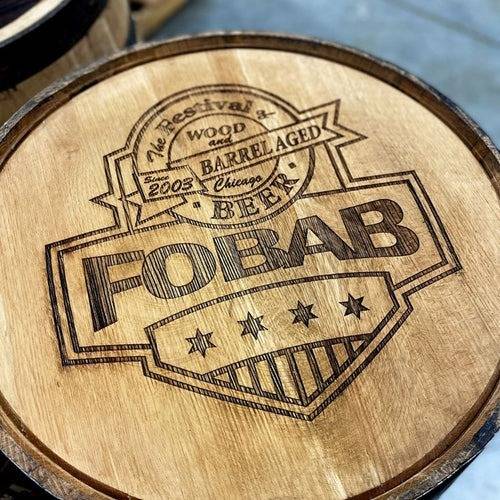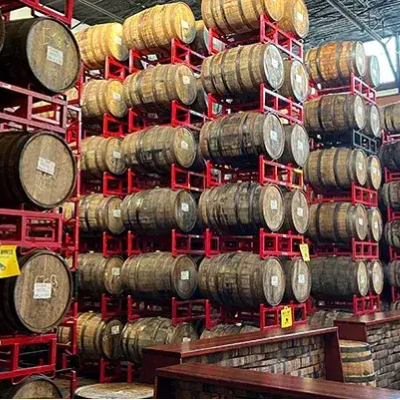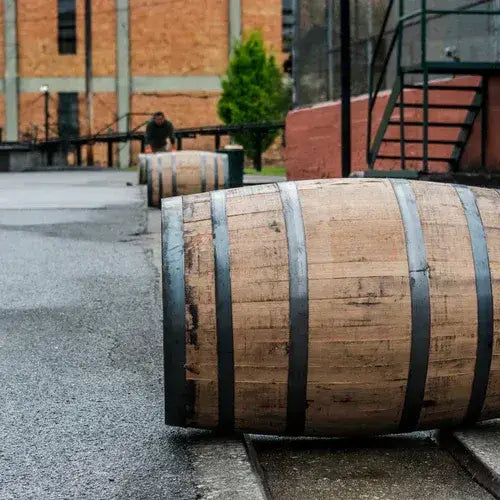Superstition Meadery’s barrel-aged meads create a buzz
March 9th, 2022

Mead is having a moment. Actually, mead’s been having a moment for a few years now – one that’s seen it grow in popularity and acceptance in the craft community.
Thanks to the rise of craft meaderies, the fermented beverage made of honey, water and yeast is ditching its sometimes unfair reputation of being overly sweet and not much else. People are finally starting to discover that good mead can be really good.
Superstition Meadery in Arizona is one of the meaderies that is creating great mead and big fans of mead. They’re also taking mead styles a step further by barrel-aging. In fact, they’re probably one of the largest barrel-aged mead operations in the nation.
Superstition Production Manager Zeke Peyton said the meadery usually has about 175-200 barrels of mead aging at any given time.
“The warehouse is pretty full,” he said while chatting with Midwest Barrel Co. about all things barrel-aged mead.
There’s more to mead than sweet

Peyton has been around brewed beverages (beer, cider, mead – you name it) and barrels for a while now. He got interested in homebrewing in college and landed his first job at a brewery as a tour guide at now-closed Green Flash Brewing Company in San Diego in 2014.
He worked his way up the ladder as he found gigs at several different breweries, cideries and meaderies, including Lost Cause Meadery toward the end of 2019. That’s how he got his true start in mead-making.
That’s also when Peyton discovered what many other folks are finally beginning to pick up on: that there’s more to mead than sweetness.
“Most brewers are like, no, mead’s too sweet,” he said. “But you really get around people who know what they’re doing with it and you realize that there’s a lot of depth to it and a lot of range.”
Superstition’s “barrel-crazy” mead makers
Superstition isn’t Peyton’s first job that involves barrel-aging. After joining Green Flash back in 2014, he was asked the next spring to help open Cellar 3, which was that brewery’s barrel program with a tasting room. There, he was able to learn for himself – and his employers – how to handle barrels.
“That was kind of where the fascination began,” Peyton said.
Peyton would later move on to a couple other breweries and a cidery, working different positions. Several involved barrel-aging, while others didn’t. But he eventually got his first taste of a big-time aging program when joined Modern Times Brewery for a special projects position.
He bounced around a couple more times, picking up experience at each stop, and eventually landed at Superstition in the summer of 2020, then as a head mead maker and now as production manager.
He’s already developing future plans for the meadery’s barrel program and has found a fellow “barrel nerd” in Superstition Owner Jeff Herbert.
“Eventually, I’d like to have a special projects manager, where we have somebody who can go through and keep track of the barrel stuff and that’s their job just to update that,” Peyton said. “But for the time being, I’m the one who’s updating all the resources that we have built around that program. I’m usually the one checking on it. If not myself, Jeff. Jeff is barrel-crazy. He usually likes to go through the stack and taste through things.”
How Superstition hunts down the best barrels
Being barrel-crazy does have its benefits. For one, that’s what it takes to make great barrel-aged beverages. But it can also earn beverage makers some well-earned recognition.
Superstition’s mead has been known to medal at competitions, including the Mazer Cup and Festival of Wood & Barrel-Aged Beers (FOBAB).
To get to that point, you need to know what you need from a barrel. Peyton and the rest of the Superstition crew know exactly what they need.
“The first thing we’re going to ask ourselves is are we looking for wine or spirit character or are we just looking for big oak,” he said. “Because our stack is a mixture of wine and spirits and new oak. So we’ll start there.”
For new oak, Superstition will usually go with American White Oak, although sometimes French oak and its more subtle flavors are a better choice.
“We’re looking at the origins, looking at the character, looking at the toast levels, same kind of idea for the spirits,” Peyton said. “We start at that baseline for the spirits, like, what do we want out of this and what can we get? Typically, we try to look for fresh (barrels). There’s only a couple of products that we have that really rely on one particular barrel type, as far as the brand.”
In Peyton’s experience, used bourbon or whiskey barrels from big name brands don’t necessarily boast more flavor or much in the way of unique flavor compared to lesser-known brands. If anything, they could affect marketing the mead, he said, but that’s about it as far as the product itself.
“I think once you hit a certain point of quality, as long as you’re getting something decent, you’re going to get what you want out of the barrel,” he said. “So the main thing we look for is fresh.”
That’s why he’ll often ask what has been brought in more recently when he’s ordering barrels.
“Obviously if it’s wet, then you’re going to get way more spirit character,” he said. “And I think that’s something that plays in with a lot of the meads that we do with our barrels.”
Planning ahead when ordering barrels

Superstition knows what types of barrels it needs for each of its specific barrel-aged meads. But the team also is very on top of planning when they will need those barrels.
For example, planning for 2022 began in October 2021, Peyton said. He sat down with a couple of mead makers and came up with ideas to pitch to Herbert. Peyton brought in the COO, too, to help with sales data and plan how much mead needs to be produced and poured inside barrels for each project.
Once the barrels are ordered and ready to be filled, Peyton and the team typically know how long they’ll need to age mead. This also helps when planning barrel orders.
“With the very large scale batches, our core product Lagrimas de Oro and our distributed barrel-aged release Safeword, the two of those we shoot for at least six months,” Peyton said. “We’re going to taste it halfway through, make sure everything’s going well, get our ABV in order.”
At that point, they’ll go through barrels, grade them all and select which ones they want to keep aging for an extended period of time.
“Then when we go to pull it, typically that’ll be based on need,” he said. “We’re not going to dip under that six-month timeframe. We know that that mead needs at least six months. More isn’t going to hurt it. And typically, with that six-month rotation, it keeps us stocked with what we need.”
The process for other Superstition meads is more “play-it-by-ear,” Peyton said. That’s where sampling is required.
“It really depends on whether or not it tastes right,” he said. “So before we make that decision (to empty the barrel) with almost anything, we’re going to try it, pull a nail, see how it is.”
Where to find Superstition's meads
Whether they’re barrel-aged or not, you’re going to want to give Superstition’s meads a shot. The good news is that they’re widely available throughout the country.
Plus, they can ship to most states for orders placed through their webstore. Make sure you check out a few of the barrel-aged meads, as they just might have spent time in barrels from Midwest Barrel Company!
Learn more about our barrels by reading even more posts from our blog, The Full Pour.

ABOUT THE AUTHOR:






